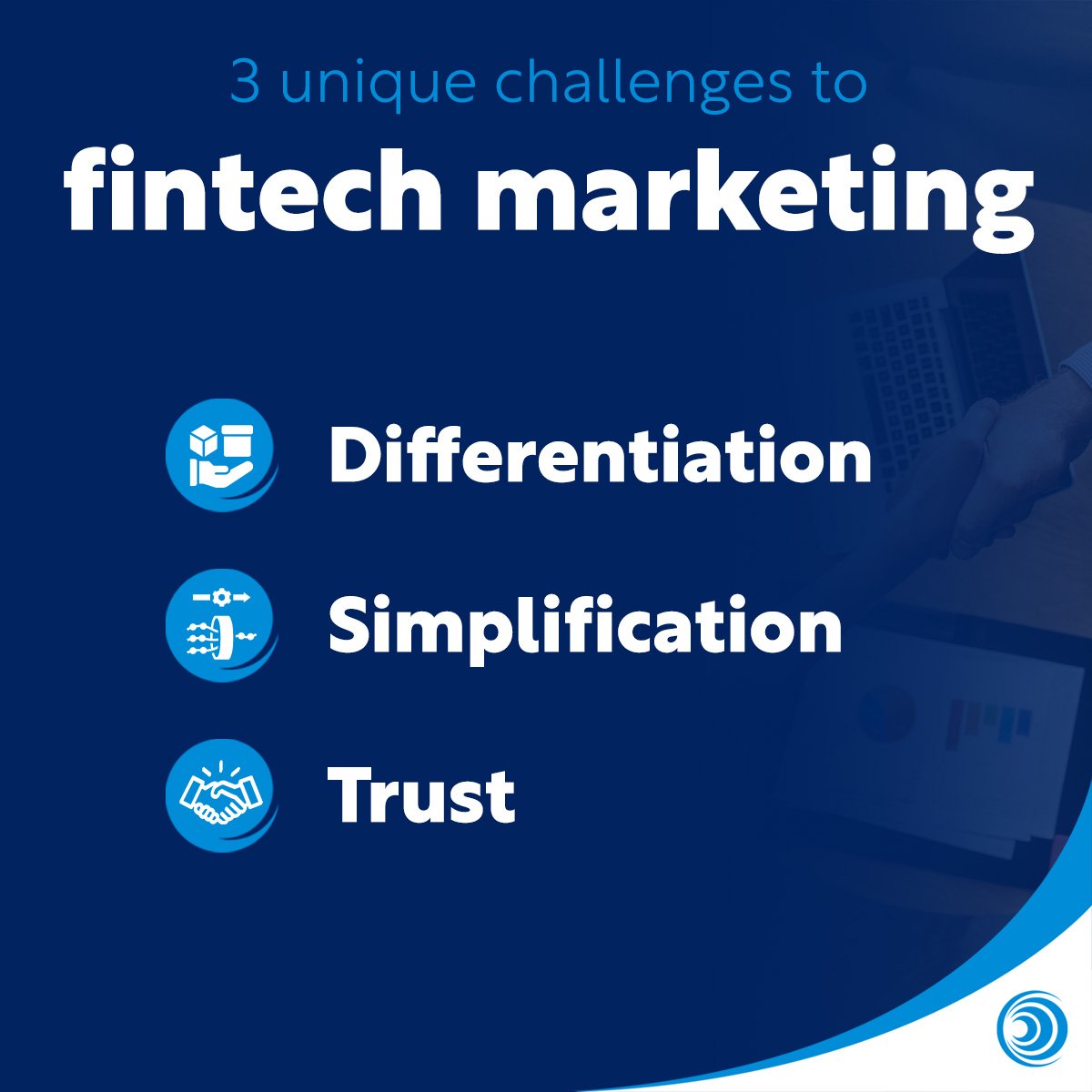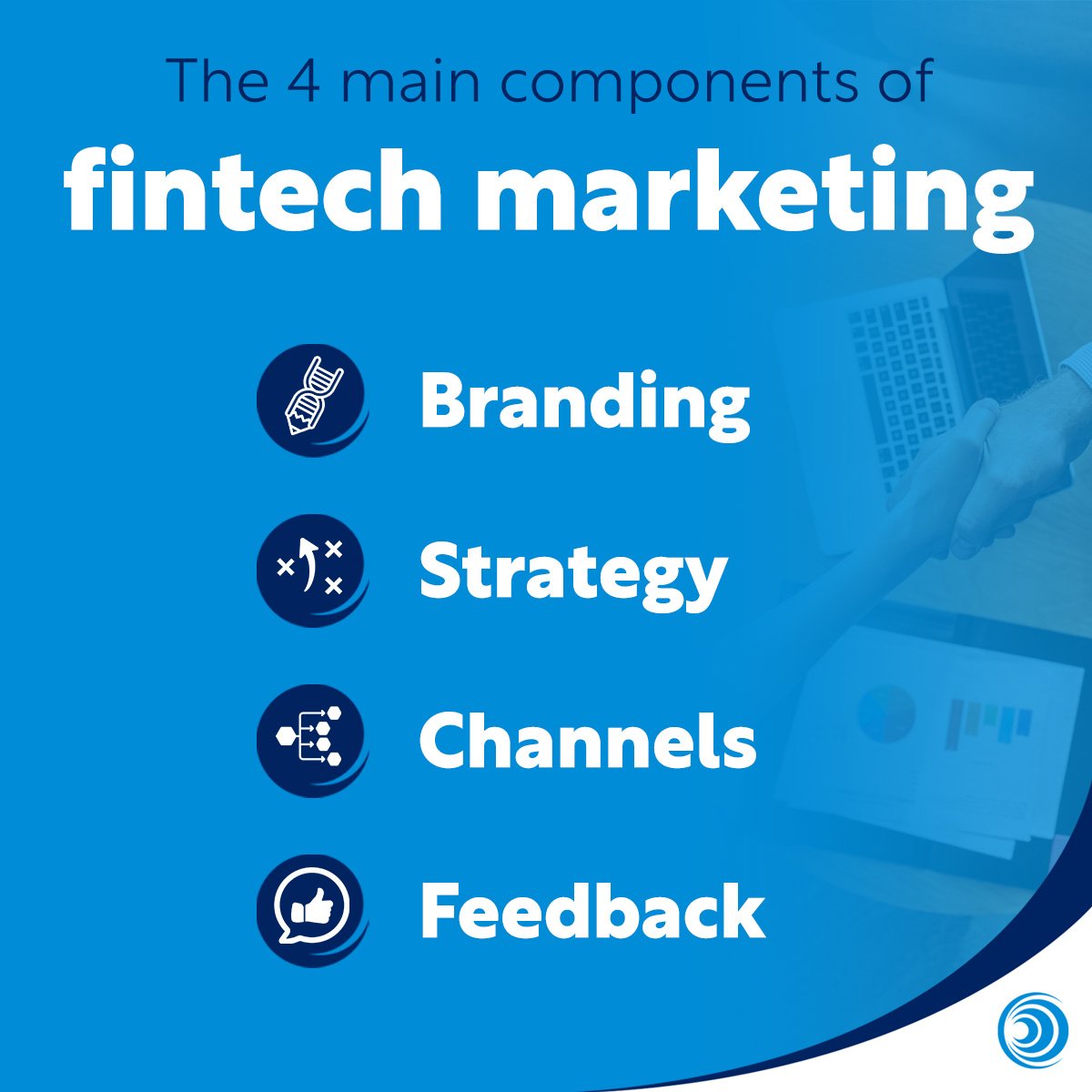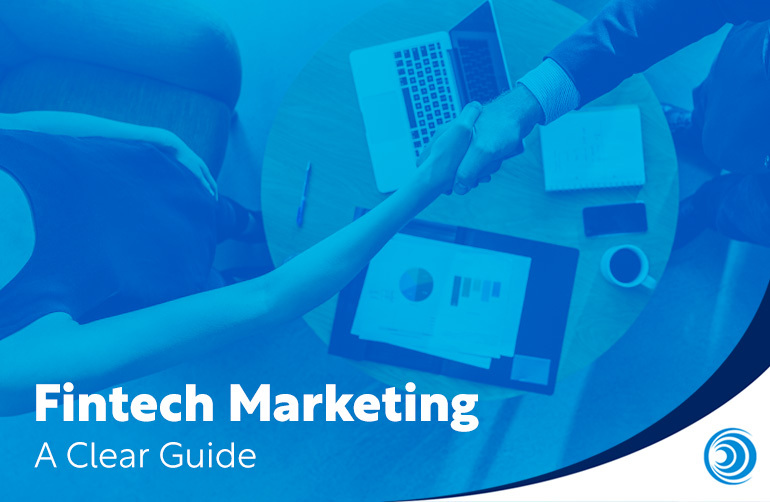- The Power of Reviews & Testimonials in Fintech Marketing - October 13, 2025
- The Best Fintech Newsletters to Keep You Informed & Inspired - October 8, 2025
- What Is SEO and Why It Matters For Fintech Companies - August 12, 2025
Successful fintech marketing ultimately comes down to creativity and competence.
In other words, it’s part art and part science.
And to truly excel, both parts should be seamlessly integrated. As author Vladimir Nabokov once wrote:
“There is no science without fancy and no art without fact.”
In this article we will look at:
- What is fintech marketing?
- 3 Unique challenges to fintech marketing
- The 4 main components of fintech marketing
- Types of fintech marketing
- The benefits of marketing for fintech
- The future of fintech marketing
- Conclusion
What is Fintech Marketing?
Fintech marketing refers to the discipline of promoting financial technology companies, products or services to existing and potential customers.
It covers a range of principles, strategies, tactics, methods and channels.
At its core, fintech marketing requires a deep and up-to-date knowledge of the fintech industry and its audiences.
Business-to-customer (B2C) fintech marketing vs business-to-business (B2B) fintech marketing
Fintech marketing can broadly be divided into two main categories: B2C and B2B. Each requires different considerations.
Namely, B2C marketing is often more focused on emotions and immediacy. It aims to create a high volume of customers, with each spending a relatively low amount on average.
B2B marketing, on the other hand, is more focused on data-points and long-term benefits. It looks to convince specific customers that are fewer in number but have a higher average spend.
These differences lead to different approaches and channels being favoured for each category.
However, some fintechs have both B2C and B2B streams. There is also increasingly an overlap between the two kinds of marketing, as B2B marketing trends follow B2C ones.
3 Unique challenges to fintech marketing

Like all industries, fintech has its own unique set of marketing challenges.
These have evolved and become more nuanced over the years and will continue to do so in the future. But at present, they are:
1. Differentiation
Fintech’s biggest competitors used to be traditional banks, many of which have large marketing budgets at their disposal. This meant they focused primarily on differentiating themselves from banks.
Nowadays, partnerships between fintechs and banks are increasingly common. The former help the latter scale up and implement their technology.
Now, it’s the crowded and growing fintech market that provides the most competition. Back in 2021, for example, there were an estimated 10,755 fintech startups.
Standing out isn’t easy. It’s likely that there are other fintech players who offer the same or a similar service to yours. So your fintech product or service alone won’t be enough.
Differentiation largely comes down to creating branding and messaging that interests and engages your target audience. It should be built around a USP that isn’t too product-focused, and speaks to a broader set of benefits and values.
In practical terms, this means not simply stating your USP, but creatively framing it in a way no one else is.
You need to do your market research, understand your audience and compare your competitors. Once you’ve done this, more abstract processes need to be marshalled: inspiration, vision, authenticity, awareness, etc…
In other words, this is where the art of fintech marketing comes in.
2. Simplification
The fintech industry is full of technological and regulatory innovation that’s very interesting to those working with it.
However, customers and end-users view things differently. It’s hard to get them excited about software engineering or GDPR.
Entrepreneur Steve Blank described well how this issue was at the core of Steve Jobs’ talents:
Steve Jobs was the best marketeer at the intersection of science and art that existed in the 20th century … he understood not just marketing and not just technology, but how to sell incredibly technical products to your mother, who would never care about bits, bytes, RAM’s, ROM’s, or whatever.
Of course, you won’t be able to avoid talking about your products and services totally. But when you do, bragging about technical capabilities at length is a temptation you should resist.
Instead, accurately articulating simple explanations of your technology is essential.
3. Trust
Financial services are built on trust.
The banking industry’s reputation has suffered damage in the past, as have online services more generally. Despite opinion polls, many people vote with their wallets and remain customers of both traditional banks and online shopping.
Fintechs often need to associate themselves with the relative security and stability of traditional banking institutions whilst simultaneously demonstrating their difference to them. No simple task.
Potential customers often have two general worries about signing up to fintech services:
- Is my money and data secure with this technology or platform?
- Is this fintech company itself sustainable?
If they doubt either point, they likely won’t sign up or will empty their account and uninstall the app.
Walking the line
Many fintechs find that potential customers will often baulk at the final hurdle of the signing-up process in particular. i.e., the point when it comes to authorising the use of their personal financial information.
We at Blue Train call this this phenomenon ‘walking the line‘ (ironically, also a name of a song by Johnny Cash).
A large part of fintech marketing is creating enough trust to persuade customers to walk beyond the line.
There’s no one-size-fits-all method for this, or answer to the broader question, ‘How can a fintech build trust?’
Just as with people, trust takes time, transparency and consistency to achieve. It comes from subtle cues embedded in the details of marketing, as well as bolder statements made upfront in it.
The 4 main components of fintech marketing

If you Google ‘how many different types of marketing are there?’ the current top 5 results say: 5, 163, 19, 41 and 18.
There are also many different approaches and opinions to each type, too. This means it can be difficult for fintechs to know where to even start.
So it’s best to first focus instead on the main components of marketing, which we’ve boiled down to the following:
1. Branding
Branding heavily influences that crucial first moment when (or if) customers discover your product or service.
It’s essential but it’s also relatively subjective and intangible, too.
The first place to start is with brand identity. It includes all of the fundamental elements of your brand, from its name and visual identity to the tone of voice and personality of its messaging.
Your branding activities will gain clarity and cohesion from this.
Branding more broadly speaking should be seen as an organic, ongoing process. It can be tweaked over time, and new aspects of it can be tested on different platforms.
For example, your tone of voice on social media won’t be the same as that of your website or email marketing.
Different branding examples: Starling & Klarna
Fintech branding is full of variety across different segments. Just look at Starling Bank and Klarna Bank AB, for example.
Starling Bank is a digital challenger bank. It uses simple and tranquil branding (described by one of their brand design creators as having a brand personality called ‘The Sherpa’).
Klarna operates in retail and customer financing. They rebranded back in 2017. At the time, their objective was, according to CMO David Sandstrom, to make the brand more ‘energetic’. He guided them from being – in his words – ‘blue and boring to pink and exciting’.
2. Strategy
An effective fintech marketing strategy will lead your marketing tactics, campaigns, and the overall cohesion of your activities.
It requires careful planning and the setting of strategic objectives that should be consistent yet flexible.
Uniting your team under one strategy also fosters a sense of community and morale, which in turn can inspire creativity and growth.
As with branding, it can be hard to know where to begin with fintech marketing strategies. Clear, realistic and measurable strategic objectives are crucial.
‘If you chase two rabbits, you will not catch either one.’ (Russian Proverb)
It’s also important to bear in mind the sustainability of your marketing strategy.
Some startups, for example, may decide to run impressive but expensive marketing campaigns soon after receiving funding. Once this budget is gone, so too is the momentum it built.
Improved SEO and social media marketing results are examples of more stable and longer-lasting strategic objectives fintech for startups.
3. Channels
Promoting your products and services on the right channels is crucial if you want to find your audience. Content being seen isn’t enough – it needs be seen by the right audience.
Publishing thought leadership pieces on your own blog, for example, rarely brings as much exposure as publishing them on relevant industry outlets.
And Snapchat, Instagram and TikTok are still the best platforms for targeting Gen Z.
Recently, NatWest even launched a Business Builder campaign on the latter platform. CMO Margaret Jobling remarked that this was “partly to reach younger audiences but also to show what our Business Builder online toolkit can do in the most accessible way possible.“
Understanding the latest social media research and where your competitors are active is the first step towards working out which channels will work best for you.
4. Feedback
A consistent and well-structured feedback process is a great tool for long-term growth within your marketing strategy and team.
Achieving your strategic objectives on the right channels isn’t always easy to measure. But if done correctly, measuring will also be an invaluable guide to your strategy.
For example, did your SEO marketing efforts bring a proportional rise in leads to traffic? What was the ROI on your PPC ad campaigns? Do your social media engagement metrics translate to successful business growth?
Transparency and authenticity is paramount. So too is being willing to learn from mistakes. Pressure for positive reporting can lead to more effort on trying to add spin to data than on learning from it.
Psychologist Daniel Kahneman once wrote:
“True intuitive expertise is learned from prolonged experience with good feedback on mistakes.”
One of the best, most practical ways to gain feedback is A/B testing. This can be used for email campaigns, website pages (it’s especially useful with testing call-to-action buttons), email marketing, and more.
Types of fintech marketing
Fintech marketing covers a range of sub-disciplines. Below we have listed the main ones.
Outbound marketing
Outbound marketing is based around pushing out marketing materials to potential customers in order to generate leads.
Outbound marketing activities cover traditional ads, trade shows, cold calling, mass email campaigns (to unsubscribed recipients), and more.
The general consensus in marketing is that whilst some of these activities still have their place, they are increasingly becoming less relevant.
This is especially true in fintech marketing, where single-outreach tactics are seen as insufficient at building trust.
Inbound marketing
Inbound marketing is marketing that attracts customers to your brand, products and services. Unlike outbound marketing, it generally aims to first give potential customers value before converting them.
Inbound marketing includes:
1. Search engine optimisation (SEO)
This is the area of maximising how your website can be found organically via search engines. Fintech SEO includes ordinary elements of SEO (content creation and keyword research, backlink outreach, and technical SEO) plus a knowledge of fintech.
2. Pay-per-click (PPC)
PPC covers clearly labelled adverts that appear on search engines and social media platforms. Unlike SEO, it can bring immediate leads.
But it’s not as straightforward as simply selecting keywords and paying your money. It’s a fast-evolving field requiring a range of skillsets, from crafting compelling copy to strategically allocating spend.
3. Social media marketing
For most people, social media marketing brings to mind influencer and viral marketing.
However, consistent, high-quality posting aimed at gradually building up an audience makes up a larger portion of it.
4. Video marketing
According to several different sources, around 80% of all internet traffic is for video. Being able to produce fun, informative videos is crucial for getting your target audience’s attention. So too is knowing how to maximise your video content’s reach.
5. Email marketing
The email inbox is possibly the most inbound destination – according to one study, the average person checks it 15 times a day. Email marketing helps nurture leads and build customer loyalty.
The benefits of marketing for fintech
Like all marketing, the ultimate benefit of fintech marketing is that it brings more customers.
The growth of individual fintech companies can be impressively rapid. This reflects the dynamic nature of industry itself, too. Marketing drives much of this.
The downside to this is that companies may vanish as quickly as they appeared. Fintechs have to work particularly hard to retain existing customers. Emptying and online account is easier than emptying a physical one.
The future of fintech marketing
Change defines the fintech industry and new fintech marketing trends consistently appear.
New types of fintech companies, products and services will continue to emerge. Perhaps the distinction of being a ‘fintech’ itself will eventually fade as larger financial institutions morph into similar entities.
Change also defines the world of marketing. The era of television, radio and print media is still in living memory.
The notion that AI will take over a significant proportion of content marketing soon, for example, is commonly spoken about nowadays.
Either way, the essential ingredients of marketing will remain. The art and science of the craft will still be needed for a while yet.
Conclusion
Marketing platforms and trends come and go. Marketers need to to master the former and understand in the latter.
Fintech is a crowded and competitive industry. Getting your voice heard and converting your audience into customers isn’t easy.
To be successful with your fintech marketing, you need to differentiate your brand, simplify your messaging and build trust.
You also need to have great branding and strategy deployed on the right channels with the right feedback process built in.
